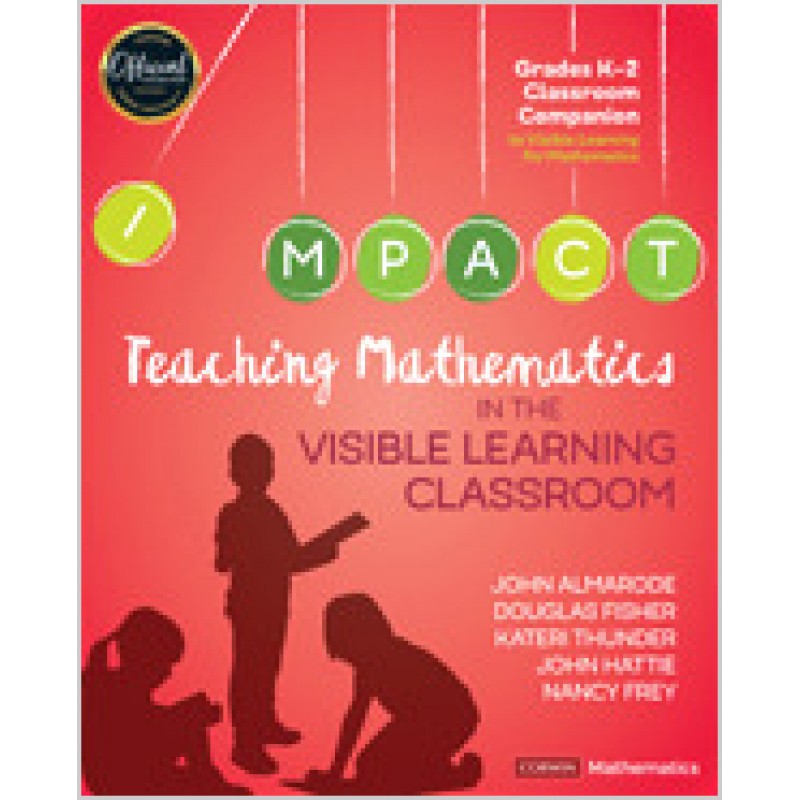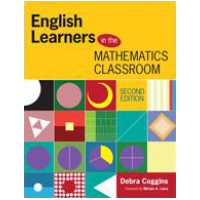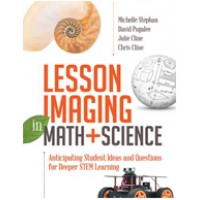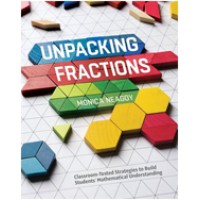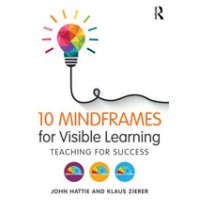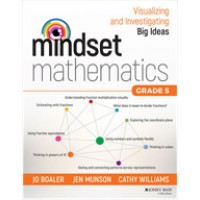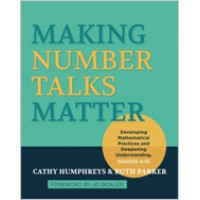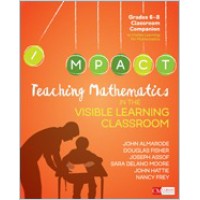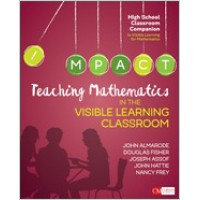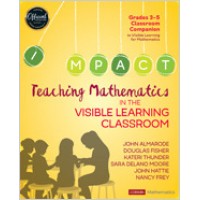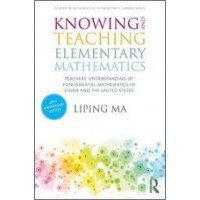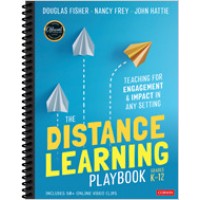Teaching Mathematics in the Visible Learning Classroom, Grades K-2, Mar/2019
| Author(s) | John Almarode, Douglas Fisher, Kateri Thunder, John Hattie, Nancy Frey |
| ISBN10 | 1544333293 |
| ISBN13 | 9781544333298 |
| Format | Paperback |
| Pages | 288 |
| Year Publish | 2019 March |
Synopsis
Select the right task, at the right time, for the right phase of learning
Young students come to elementary classrooms with different background knowledge, levels of readiness, and learning needs. What works best to help K–2 students develop the tools to become visible learners in mathematics? What works best for K-=–2 mathematics learning at the surface, deep, and transfer levels?
In this sequel to the megawatt bestseller Visible Learning for Mathematics, John Almarode, Douglas Fisher, Kateri Thunder, John Hattie, and Nancy Frey help you answer those questions by showing how Visible Learning strategies look in action in K–2 mathematics classrooms. Walk in the shoes of teachers as they mix and match the strategies, tasks, and assessments seminal to making conceptual understanding, procedural knowledge, and the application of mathematical concepts and thinking skills visible to young students as well as to you.
Using grade-leveled examples and a decision-making matrix, you’ll learn to
- Articulate clear learning intentions and success criteria at surface, deep, and transfer levels
- Employ evidence to guide students along the path of becoming metacognitive and self-directed mathematics achievers
- Use formative assessments to track what students understand, what they don’t, and why
- Select the right task for the conceptual, procedural, or application emphasis you want, ensuring the task is for the right phase of learning
- Adjust the difficulty and complexity of any task to meet the needs of all learners
It’s not only what works, but when. Exemplary lessons, video clips, and online resources help you leverage the most effective teaching practices at the most effective time to meet the surface, deep, and transfer learning needs of every K–2 student.
About the Authors:
Dr. John Almarode has worked with schools, classrooms, and teachers all over the world. John began his career in Augusta County, Virginia, teaching mathematics and science to a wide-range of students. Since then, he has presented locally, nationally, and internationally on the application of the science of learning to the classroom, school, and home environments. He has worked with hundreds of school districts and thousands of teachers across the world. The work of John and his colleagues has been presented to the United States Congress, The United States Department of Education, as well as the Office of Science and Technology Policy at The White House. John has authored multiple articles, reports, book chapters, and books. However, what really sustains John, and his greatest accomplishment is his family. John lives in Waynsboro, Virginia with his wife Danielle, a fellow educator, their two children, Tessa and Jackson, and Labrador retrievers, Angel and Forest.
Douglas Fisher, Ph.D., is Professor of Educational Leadership at San Diego State University and a leader at Health Sciences High & Middle College. He has served as a teacher, language development specialist, and administrator in public schools and non-profit organizations, including 8 years as the Director of Professional Development for the City Heights Collaborative, a time of increased student achievement in some of San Diego’s urban schools. Doug has engaged in Professional Learning Communities for several decades, building teams that design and implement systems to impact teaching and learning. He has published numerous books on teaching and learning, such as Assessment-capable Visible Learners and Engagement by Design.
Kateri Thunder, Ph.D. served as an inclusive, early childhood educator, an Upward Bound educator, a mathematics specialist, an assistant professor of mathematics education at James Madison University, and Site Director for the Central Virginia Writing Project (a National Writing Project site at the University of Virginia). Kateri is a member of the Writing Across the Curriculum Research Team with Dr. Jane Hansen, co-author of The Promise of Qualitative Metasynthesis for Mathematics Education, and co-creator of The Math Diet. Currently, Kateri has followed her passion back to the classroom. She teaches in an at-risk PreK program, serves as the PreK-4 Math Lead for Charlottesville City Schools, and works as an educational consultant. Kateri is happiest exploring the world with her best friend and husband, Adam, and her family.
Professor John Hattie is an award-winning education researcher and best-selling author with nearly 30 years of experience examining what works best in student learning and achievement. His research, better known as Visible Learning, is a culmination of nearly 30 years synthesizing more than 1,500 meta-analyses comprising more than 90,000 studies involving over 300 million students around the world. He has presented and keynoted in over 350 international conferences and has received numerous recognitions for his contributions to education. His notable publications include Visible Learning, Visible Learning for Teachers, Visible Learning and the Science of How We Learn, Visible Learning for Mathematics, Grades K-12, and, most recently, 10 Mindframes for Visible Learning.
Nancy Frey, Ph.D., is a Professor in Educational Leadership at San Diego State University and a leader at Health Sciences High and Middle College. She has been a special education teacher, reading specialist, and administrator in public schools. Nancy has engaged in Professional Learning Communities as a member and in designing schoolwide systems to improve teaching and learning for all students. She has published numerous books, including The Teacher Clarity Playbook and Rigorous Reading.

